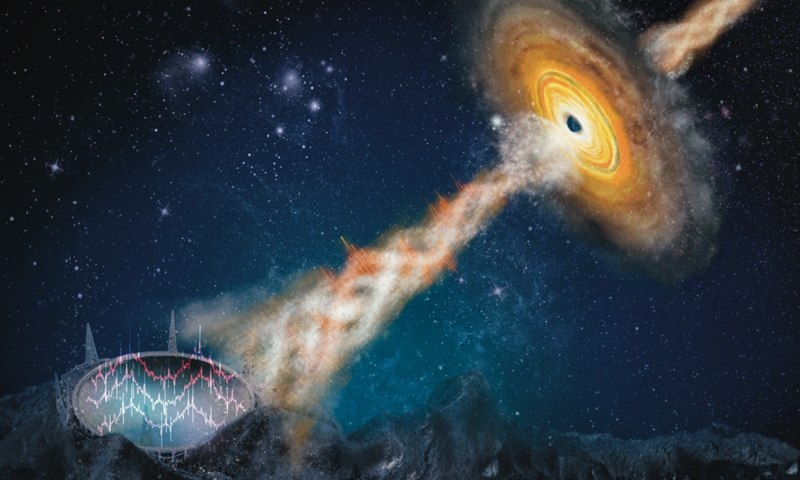FAST makes new discovery of black hole phenomenon, opens up new avenues for observing and studying black hole emissions

Photo: courtesy of the NAO
China's Five-hundred-meter Aperture Spherical radio Telescope (FAST), or known as the Tianyan (Heaven's Eye,) has made world's first observation of sub-millisecond low-frequency radio quasi-periodic oscillations in microquasars, renewing men's understanding of the mysterious black hole by revealing the direct correlation between the quasi-periodic oscillations in black hole systems and relativistic jets.
Global Times learned from the National Astronomical Observatories (NAO) of the Chinese Academy of Sciences (CAS) on Thursday morning that such findings made by the FAST have been published in the internationally renowned science journal Nature.
According to the NAO, a microquasar is a binary star system within the Milky Way galaxy, consisting of a neutron star or black hole and a normal star. The neutron star or black hole accretes matter from the star, creating a high-temperature accretion disk and relativistic jets. In observations, it exhibits intermittent or long-term variations in X-ray and radio emissions. It serves as a natural space lab for studying strong gravitational fields and relativistic physics.
GRS 1915+105 is a well-known fast-spinning black-hole X-ray binary with a relativistic jet, termed a microquasar, as indicated by its superluminal motion of radio emission. It has exhibited persistent X-ray activity over the last 30 years, with quasiperiodic oscillations of approximately 1-10 Hz and 34 and 67 Hz in the X-ray band.
International researchers have been observing the GRS 1915+105 from 2020 to 2022 and reported two instances of approximately 5-Hz transient periodic oscillation features from the source detected in the 1.05- to 1.45-GHz radio band that occurred in January 2021 and June 2022. Circular polarization was also observed during the oscillation phase.
Such international research was led by Wuhan University and the NAO.
The academic community believes that the discovery of the pulsating radio emission from black holes is of significant scientific importance in revealing the origin and dynamics of relativistic radio jets from compact celestial bodies. It will open up new avenues for observing and studying black hole radio emissions, according to the NAO on Thursday.



